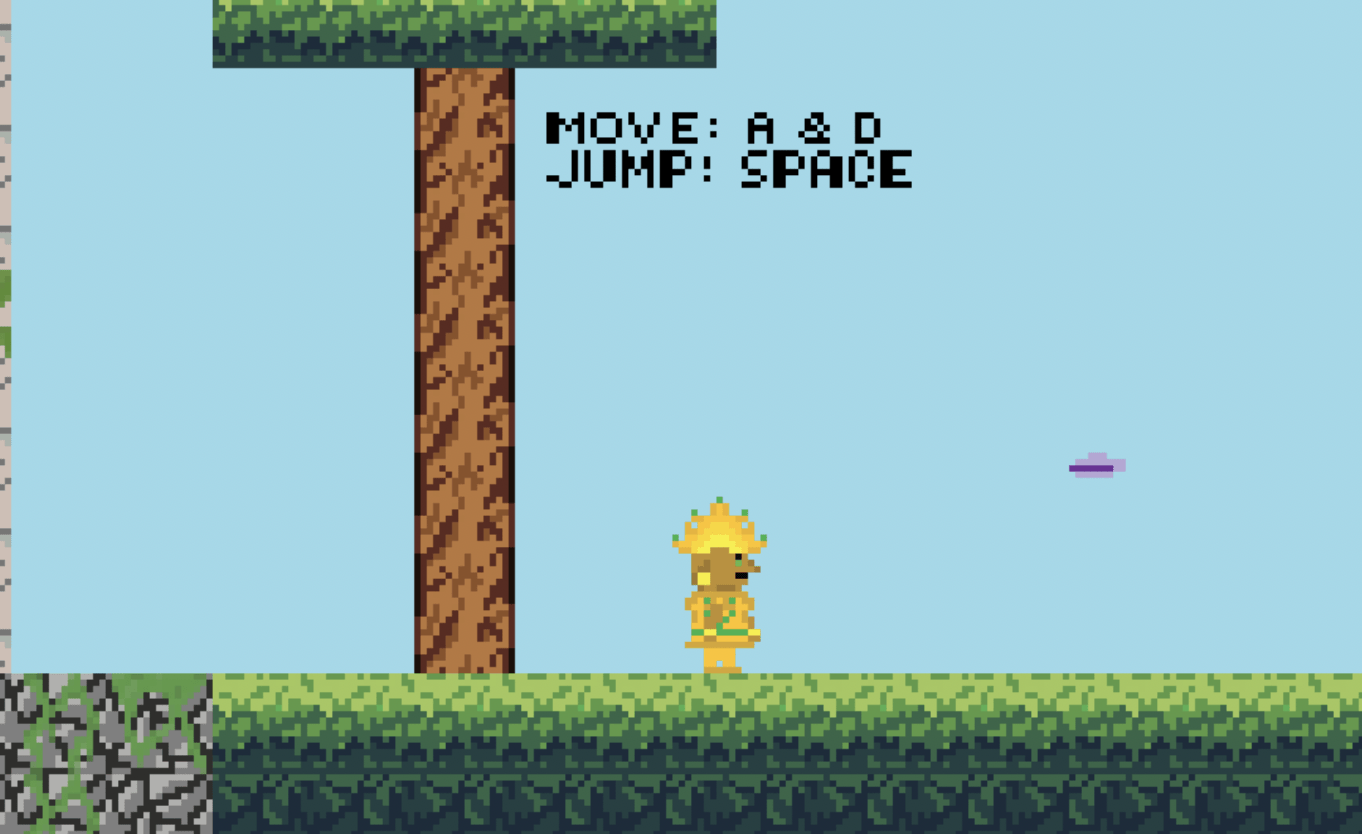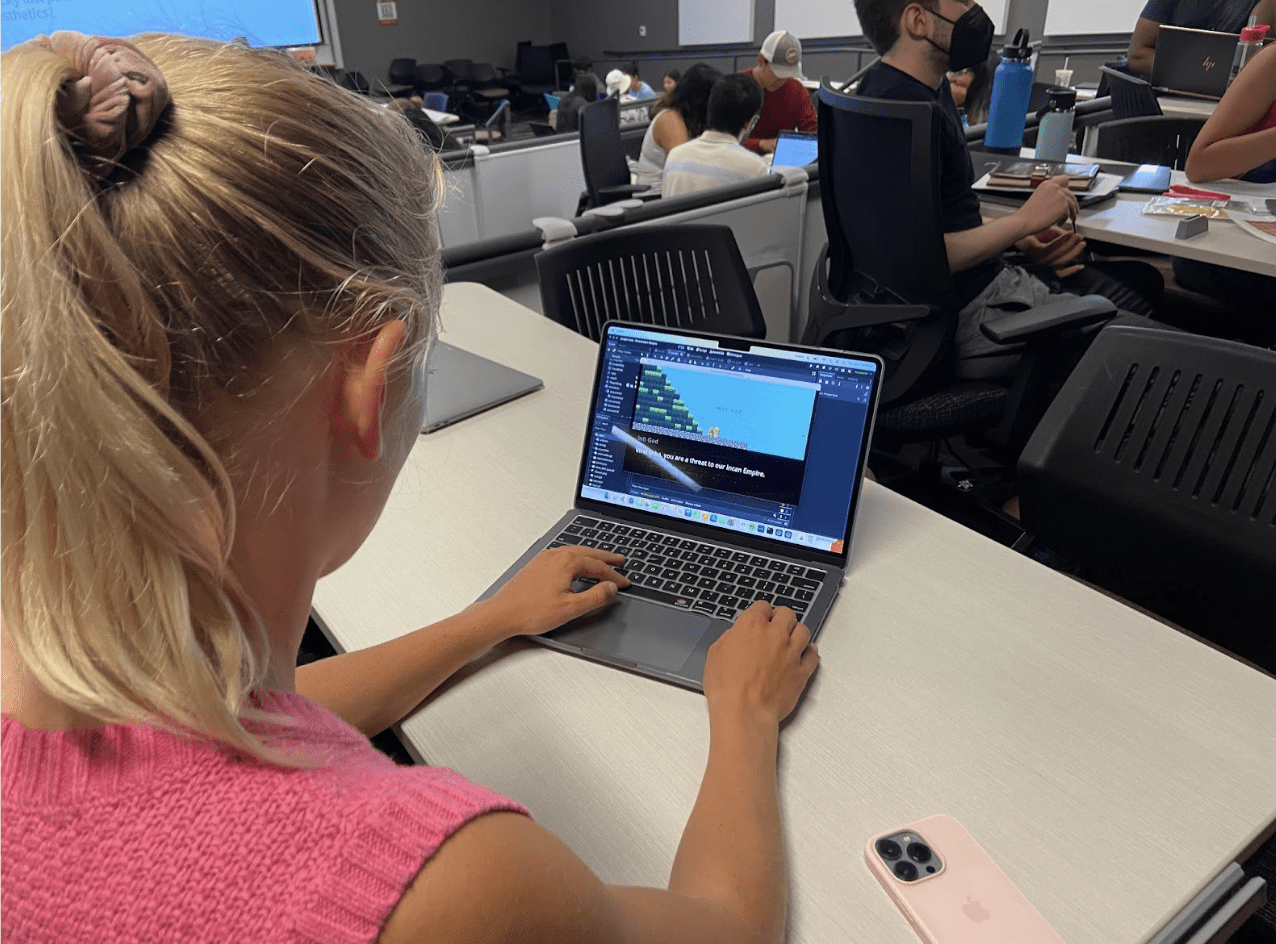Before this class, I had a limited understanding of game design and its intricacies. I thought about games primarily as a form of entertainment, an escape from reality. My perception of game design was centered around creating visually appealing and challenging gameplay experiences, without much consideration for the underlying mechanics and systems that drive the player’s engagement. And to be fair, I had never played as many games in my life as I have played this quarter.
During this class, I was exposed to a broad range of concepts and techniques that broadened my perspective on game design. I delved into the process of designing gameplay mechanics, crafting immersive narratives, and creating visually cohesive art styles. Through hands-on experiences and iterative design processes, I realized that game design is a delicate balance between creativity and technical implementation. I got to play a new game every week, which helped recognize the importance of understanding player psychology and tailoring game experiences accordingly. It also taught me what set good and bad games apart in terms of defining fun, and that it’s actually a science to make them fun, they’re not fun “just because”.

Several class concepts stuck with me throughout the course. The first one was the concept of player agency and empowerment. I learned how to design games that give players meaningful choices and allow them to influence the outcome of their experiences. This concept transformed my perception of games from mere passive entertainment to interactive storytelling mediums. Another key concept that resonated with me was the importance of playtesting and iteration. I discovered that testing early and frequently is crucial to identifying design flaws and improving the overall player experience. Although we explore iteration a lot in the d.school, it was amazing to see feedback loops come alive in a game design class! There were so many things I hadn’t even noticed as a game designer that other players critiqued about the game, especially when it came to onboarding and difficulty levels.
I implemented these concepts into my work by adopting a player-centered approach. I focused on creating games that engage players on multiple levels, offering them agency and opportunities for exploration. I incorporated feedback loops and reward systems to enhance player motivation and satisfaction. Furthermore, I emphasized the visual and auditory aspects of my games, striving to create immersive and cohesive experiences.
Throughout the class, I faced numerous challenges that pushed me out of my comfort zone. One of the biggest hurdles was grappling with the technical aspects of game development. Learning the programming language specific to Godot 4 and understanding its intricacies was initially daunting. And once you got it, you had to understand how to use its capabilities to make a game that was actually fun and could integrate key mechanisms into your game.

As a result of these experiences, I grew both as a game designer and as an individual. I developed a deeper appreciation for the collaborative nature of game development and the power of teamwork. I honed my problem-solving skills and became more adept at troubleshooting and debugging in Godot4. And finally, I realized that making a game is a science that needs to be learned and appreciated. Every game designer chooses very wisely all the mechanics and aesthetics in the game, it’s not there by luck.
Looking ahead, I am excited about the possibilities of applying my newfound knowledge and skills to my future job. Despite not going into the game industry after, I will for sure apply the principles of play-testing and having fun to the work I do in tech. And of course, I will do everything I can do keep alive the newly-found joy for games!



